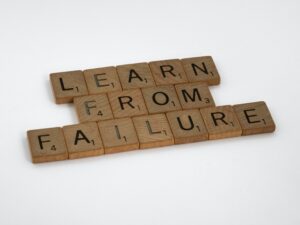MeetingMentor Magazine
5 Ways to Failure-Proof Your Meeting
 Stuff happens, no matter how meticulously your meeting was planned — as everyone learned in the hardest of all possible ways during the COVID shutdowns (and if you need a few examples of ridiculous meeting fails, check out this article). But short of a natural disaster or global pandemic, neuroscience has some nearly (because nothing is 100%) foolproof ways to failure-proof a meeting or event.
Stuff happens, no matter how meticulously your meeting was planned — as everyone learned in the hardest of all possible ways during the COVID shutdowns (and if you need a few examples of ridiculous meeting fails, check out this article). But short of a natural disaster or global pandemic, neuroscience has some nearly (because nothing is 100%) foolproof ways to failure-proof a meeting or event.
While you can never completely eliminate bad things happening at or to your meetings and events, the latest in neuroscience provides a five-step plan you can use to employ prospective hindsight to both anticipate what could go wrong and find ways around those threats, as well as find new ways to make the event even better than you initially thought possible.
Called “failure-proofing,” it’s all about learning how to look back before the fact, according to author and CEO of Disaster Avoidance Experts Gleb Tsipursky, who has a PhD in the history of behavioral science as well as a master’s degree from Harvard. This sounds bizarre for anyone without a time-machine, but it’s actually easier than it sounds.
In an article in Forbes, Tsipursky, using a meeting-planning example, explains that “Failures happen because we hit blind spots: dangerous judgment errors that cause us to assume things will just keep happening as they always have before, overlook warning signs, or assume people will understand when they don’t. There are over a hundred mental blind spots that cognitive neuroscientists and behavioral economists (like myself) call cognitive biases. Any single one can cause us to make poor decisions that lead to disasters.”
Among the blind spots and judgment errors his sample planner runs up against is an example of the false consensus effect, in this case, thinking all the attendees would find a meeting app as cool and intuitive as the planner does (they didn’t). Other problems include failing to have a backup speaker (the corporate exec who spoke instead was not as exciting as the originally booked best-selling author), and booking the usual venue without checking to see who else would be in house (turns out, the venue was overbooked and, apparently, understaffed to handle the packed house). While seasoned planners would already have these particular issues backed up with a Plan B, C and D, even they can be blindsided by unexpected bumps in the road to planning success.
Here are the five steps Tsipursky outlines — though he also has a slightly more in-depth eight-step process for more complex projects.
1. Picture what a total disaster would look like. He recommends taking the uncomfortable exercise of trying to envision what a disastrous meeting would look like for your organization. What could happen that would make attendants fume, sponsors pull out of future events, and higher-ups call for heads in the planning department to roll?
2. Brainstorm all the things that would be factors that could turn your great event into a total disaster. While you don’t have to go to crazy extremes (what if a bat got into the ballroom and got caught in the speaker’s hair?), think about all the things that could go wrong, from a speaker no-show to a fire in the venue to a medical emergency on the trade show floor. And don’t be afraid to go to uncomfortable places, like why your CEO, while a great CEO, would be a terrible replacement speaker.
3. Sort the disaster factors into a hierarchy of possibility and severity of impact on your event. How likely is a particular disaster factor, and how badly would it affect the event? Talk with your team freely and openly about which potential problems really need to be addressed, then figure out ways to mitigate them should they actually happen.
4. Revamp your meeting plan accordingly. Integrate your new contingency plans into your existing risk management policies — and don’t forget to include budgeting for those contingencies.
5. Focus on success. Now that you have the doom and gloom covered, think about what a resoundingly successful event would look like — and why. What factors will ultimately disaster-proof your meeting, even if a bat does fly into your speaker’s hair?
While some might worry that all this contingency planning could lead to “paralysis by analysis,” the reality is that a little pre-planning can go a long way toward ensuring that your event ends up being as stellar as you intend it to be. So don’t stop once you have all your bases covered in the contract — keep digging in with that 20-20 foresight and save yourself, your team and your organization potential headaches once on site.
Free Subscription to
MeetingMentor Online
"*" indicates required fields
About ConferenceDirect
About MeetingMentor